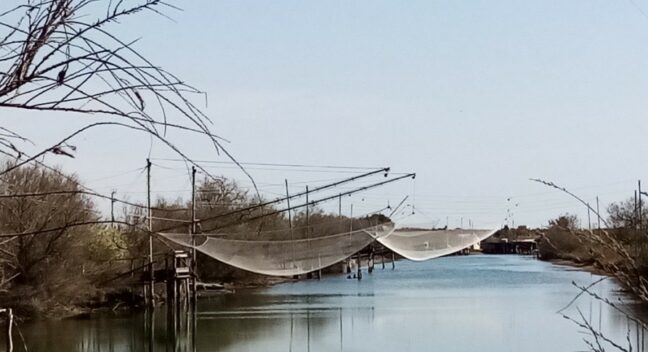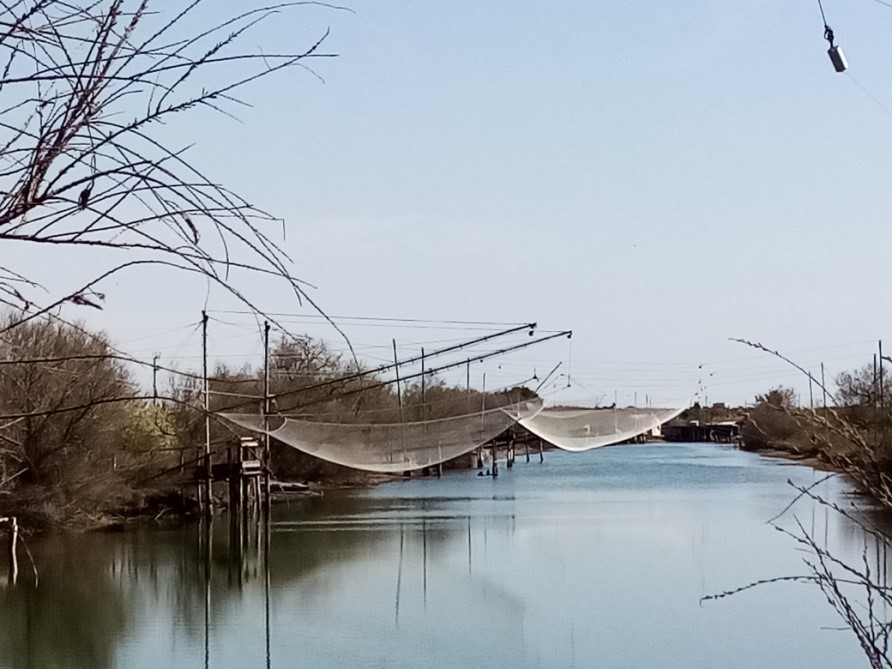Protection, restoration and management of coastal wetlands

Description
Coastal wetlands provide a natural defence against coastal flooding and storm surges primarily by dissipating wave energy. Salt marshes (i.e. coastal wetlands flooded and drained by tides) are the most effective natural coastal habitats to reduce wave heights, along with coral reefs (Seddon et al., 2020). By stabilizing shore sediments coastal wetlands also reduce coastal erosion while acting as retention areas. They can adapt to sea-level rise under certain conditions such as the ones in which sea-level rise does not exceed the local sediment accumulation rates.
Healthy wetlands are among the most effective sinks for carbon on the planet. However, this potential is often underappreciated in current policy discussions (MedWet, 2019). Wetlands sequester some of the largest stores of carbon on the planet, but when disturbed or warmed, they release the three major heat-trapping greenhouse gases: carbon dioxide, methane, and nitrous oxide. Therefore, protecting wetlands from human disturbance helps to limit the increase in greenhouse gases in the atmosphere and hence, mitigate the climate change.
So far, the role of wetlands in the climate change has mostly been neglected in wetland conservation planning in the Mediterranean region (MedWet, 2019). This was the incentive to establish the Mediterranean Wetland Initiative (MedWet) of the Climate Change Specialist Group, as part of its Scientific and Technical Network (MedWet STN/SG/Climate). Two good practices in wetland conservation and restoration in the Mediterranean taking the climate change into account are available on this platform: Škocjanski zatok in Slovenia and in Attica, Greece.
Coastal wetlands are also important habitats for a diverse population of animals such as birds, shellfish and fish, and significantly contribute to water purification as well.

Pialassa della Baiona salty lagoon in Adriatic (Italy) (Photo: Beatrice Giambastiani)
Firstly, and most importantly, the remaining coastal wetlands should be protected from any type of degradation, especially knowing that drainage and conversion to farm land alone have reduced the wetland area in Europe by some 60% since the 1950s (EC, 2007).
The restoration of already degraded coastal wetlands, on the other hand, aims at re-establishing the natural functions of wetlands that have been degraded by natural and human activities. The restoration and preservation of coastal wetlands also reduce eutrophication and maintain freshwater quality by reducing saltwater intrusion.
One way to restore coastal wetlands is to add sediment to raise the land above the water level and allow wetland plants to colonise, or to attenuate erosion processes that are degrading wetland areas. An integrated approach for managing water, sediment and habitats with the multiple aim of optimizing ground elevation, reducing coastal erosion, increasing the accumulation of carbon in the soil, reducing emissions of greenhouse gases and improving water quality has been attempted in the EU Life project “Mitigation and adaptation measures to climate change in the Ebro Delta”.
Another way to restore coastal wetlands is by re-wetting the drained coastal wetlands by blocking drainage and by reducing groundwater extraction – this is an effective restoration technique for brackish wetlands. A more resource-intensive technique would be the transplantation of vegetation coming from healthy marshes or specialised nurseries.
The managed realignment of coastal wetlands (or “de-polderisation” – returning previously reclaimed land to the sea again) is a technique of setting back the line of hard flood defences to a new line, further inland and/or on elevated ground to recreate intertidal habitats between the old and the new defence. By doing this, the wetland will serve as a buffer zone where storm surges will be attenuated. The managed realignment can also involve deliberate breaching, relocating further inland or complete removal of a coastal defence such as a dike. Both managed realignment and wetland restoration reduce the need for hard coastal defences (need for heightening and broadening dikes). Managed realignment recreates important habitats to preserve biodiversity and can also be used for recreation and ecotourism (Coastal setback).
Costs and benefits
Benefits of protecting and restoring wetlands are: protection against storm surges and erosion, improvements in water quality and increase of biodiversity and habitats. One study, using an extensive database of property exposure, estimated that wetlands avoided $625 million in direct flood damages during the Hurricane Sandy (Narayan, 2017). Another study that focused on southern Louisiana (USA) coastal wetlands (Barbier, 2013) estimated the wetland impacts on attenuating maximum storm surge levels and marginal values of wetlands in terms of avoiding damages to residential property (Table 1).
Table 1. Estimated storm surge impacts and marginal values of changes in wetland continuity (WL) and vegetation roughness (WR) (adapted from Barbier, 2013)

Wetland protection, in combination with other nature-based solutions, is sometimes preferred to grey measures as an adaptation strategy. In Boston, USA, for example, a system of coastal wetlands, waterfront parks and channels that let the water in the city, in combination with the elevation of some flood-prone areas, was recognized as a better solution to raising sea level than protecting it exclusively with sea walls.
The costs of the restoration of the coastal wetlands can include:
- Purchasing the land to be flooded is usually the main cost for managed realignment.
- For wetland restoration, indirect costs are generally lower, as purchasing land is not necessary. However, restoration is cost-effective only if the required sediments are easily available.
- Managed realignment can significantly reduce the cost of coastal defence and erosion-protection measures, notably as less further works on coastal defences such as heightening or broadening will be required. As coastal wetlands reduce the impact of waves against coastal defences, it is also likely that maintenance costs will be lower. However, the relocation of infrastructures and/or activities that might be required can (partly) offset these benefits.
Implementation time and lifetime
The implementation time of restoring a coastal wetland can vary greatly based on the extent of the site and conditions of each project. The implementation time is also related to the communication and legal actions such as expropriating land. The lifetime of coastal wetlands also depends on local conditions: in particular, erosion and sedimentation processes. As such, for the coastal wetlands to remain intact and have a long lifetime, regular maintenance of the wetland conditions is required.
Source for more detailed information
Barbier, W. B. (2013) Valuing ecosystem services for coastal wetland protection and restoration: progress and challenges, Resources, 2, 213-230; doi:10.3390/resources2030213
EC (2007) LIFE and Europe’s wetlands: Restoring a vital ecosystem, available at https://ec.europa.eu/environment/archives/life/publications/lifepublications/lifefocus/documents/wetlands.pdf
MedWet (2019) The role of wetlands in climate change adaptation is under appreciated, available at https://medwet.org/2019/01/med-wetlands-and-climate-change-adaptation/
Narayan, S. et al.(2017) The value of coastal wetlands for flood damage reduction in the northeastern USA. Scientific Reports 7:9463
PAP/RAC (2021) Handbook on coastal resilience for the Adriatic, INTERREG AdriAdapt project, Split.
Seddon, N. et. al. (2020) Global recognition of the importance of nature-based solutions to the impacts of climate change.Global Sustainability 3, e 15, 1–12. https://doi.org/10.1017/sus.2020.8
UNEP (2016) Options for Ecosystem-based Adaptation (EBA) in Coastal Environments: A Guide for environmental managers and planners. UNEP, Nairobi
